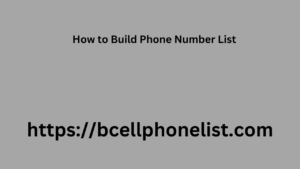Imagine how much easier it would be to run B2B marketing campaigns if you knew exactly which people within your company you needed to reach and what messages would be most effective for them. With inbound marketing and account-based marketing (ABM), this is now possible.
The first, in short, is about creating content that attracts , converts and retains customers.
If you want to learn more about inbound marketing, read our article ” Inbound marketing: attracting and retaining customers “.
The second, on the other hand, is based on the alignment between marketing and sales , to offer potential customers a consistent and personalized purchasing experience .
Maybe, because of their definitions, you think you have to choose between the two, but that is not the case. In fact, instead of choosing between “ABM or inbound”, you have to use both ABM and inbound.
Let’s now define what account-based marketing is , how it can coexist with inbound and how to create an ad hoc strategy .
What is Account Based Marketing?
Account-based marketing is a customer development strategy . It aligns marketing and sales functions to create a personalized experience for each targeted account (company) .
The goal is to attract the decision-makers within them.
Aligning sales and marketing is key to targeting this select group of companies. So, create marketing and sales strategies that target each persona. Provide a consistent shopping experience for customers and companies. Focus on companies that sell products or services to other companies (B2B).
Aligning sales and marketing when using an ABM strategy helps you make more efficient business decisions . It eliminates the time spent trying to select the best customers to target, and speeds up the process of retaining potential customers.
ABM treats accounts as if they were individual shoppers, so you can delight the people inside them—the decision makers —with a personalized content strategy.
ABM is a strategy that shortens sales cycles . It increases ROI and makes selling to the most important accounts more effective. It satisfies the desires of each individual account in terms of how they buy.
Account Based Marketing vs Inbound Marketing? Maybe not.
ABM allows you to satisfy high-value customers with a targeted approach. Inbound marketing , on the other hand, reclaims the attention of customers. It does this by creating valuable content and optimizing it for search engines (SEO), providing relevant information to the audience in an organic way.
But what do they have in common?
Both strategies require a deep understanding of your buyer persona to define the best type of content and increase your chances of reaching them.
According to HubSpot ABM Product Marketer Ryan Batter, “Every growth story starts with the same fundamentals of inbound marketing: building great content, creating a publishing strategy, optimizing SEO to drive discovery, and generating new leads.”
You can repurpose content and use the same channels for ABM that you’ve already implemented with inbound . ABM is often about taking a piece of content and personalizing it even more.
Both inbound and ABM focus on providing a great customer experience throughout the entire flywheel . ABM helps accelerate the flywheel while inbound activity is ongoing.
Furthermore, both are content marketing strategies that focus on targeted and personalized content. ABM focuses on satisfying the right customers through content that is specifically created to meet their needs, similar to inbound marketing.
Finally, the two satisfy and retain your customers because an ABM strategy focuses on a set of specific accounts, you will have more opportunities to focus on satisfying and retaining those particular customers. That’s not all, you can use the two in a partnership to elevate your entire strategy.
“For some stories, companies benefit immensely from integrating their inbound base with account-based strategies by providing more personalized and tailored buying experiences to a subset of high-value leads,” says Batter.
Put another way:
Inbound marketing helps you attract the right customers . Then, account-based marketing uses marketing and sales to accelerate the flywheel process and provide a valuable customer experience. Ultimately, both strategies help you win those target accounts.
It is essential to approach account-based marketing in an inbound way : provide valuable content and experiences to your most important customers.
Using the two together helps you deliver a more robust strategy. For example, with software like HubSpot CMS for your website, you can experiment with creating custom pages that align with your business goals.
Starting from your website, you can also set up the best strategy in terms of lead generation, through calls to action ( CTA ) and personalized landing pages based on your target account.
How to Make an Account Based Marketing Strategy
To bring in new customers with account-based marketing, make sure your strategy focuses on personalizing the way you communicate with your target companies. There are five main stages in account-based marketing.
Purchasing phone number data allows you to enhance your marketing efforts, build stronger relationships, and boost sales by speaking directly with your audience. Whether you want to promote products, services, or special offers, this how to build phone number list direct marketing method ensures your message reaches the right people.Contact us today to discover how our U.S. cell phone number lists can drive success for your business and help you grow your customer base.
1. Identify
Sales and marketing must identify smm implementation steps and select relevant accounts. Start with selection. Consider factors such as company size, number of employees, location, and annual revenue. This information is asia phone number important to understand which accounts to target .
Use buyer personas to understand the daily lives and challenges of your target buyers . Determine what content and channels to use to reach them, such as social networks, Google Ads campaigns, advertising and email marketing .
2. Expand
Purchasing decisions are made by multiple people in a company. ABM helps create a connection with potential buyers and engages them in the purchasing decision.
In the expansion phase, it is important to create unique, company-specific content that will appeal to every potential customer in the organization. Whether your product is for marketers, manufacturing, or any other department, make sure you identify and involve everyone in the purchasing decision. This is critical to customer acquisition.
Consider the challenges each of your stakeholders faces in creating compelling content. For example, while the accounting department may be concerned with costs, operations departments may be concerned with user access, ease of use, and security. In this context, you can create targeted content and interactions that solve the problems and challenges of each individual for each department.
3. Engage
This is where sales and marketing meet and come together to engage stakeholders across various channels.
For example, one of your interlocutors may prefer emails. If so, provide them with a useful and relevant commercial message. This way, you can start a conversation.
This stage is largely about developing relationships and getting to know all the buyers who will make the final decision.
4. Promote
Next, you want to cultivate relationships with some stakeholders who can serve as advocates within the organization . The modern buyer can tune out information they don’t want to hear. So it’s up to both marketing and sales to provide value and talk about the product when and where needed.
One way to promote your offer based on your target audience, for example, is through the use of email marketing .
5. Measure
Finally, account-level reporting can give you insights into what’s working, what’s not, and how to improve over time. Use HubSpot ABM software to report on your company’s growth. Track revenue, relevant job titles, and engagement levels, and see everything at the account level.
How can we do everything in the best way?
In summary, the actions to implement an effective and efficient account-based marketing strategy start from the application of the inbound methodology.
To best manage these strategies, it is necessary to use the right instruments and tools. What do we recommend? The marketing automation and CRM platform HubSpot !
HubSpot is an all-in-one software . It allows you to manage everything on a single integrated platform. You can have everything you need: CRM , CMS Hub , Marketing Hub , Sales Hub and advanced analytics tools .

